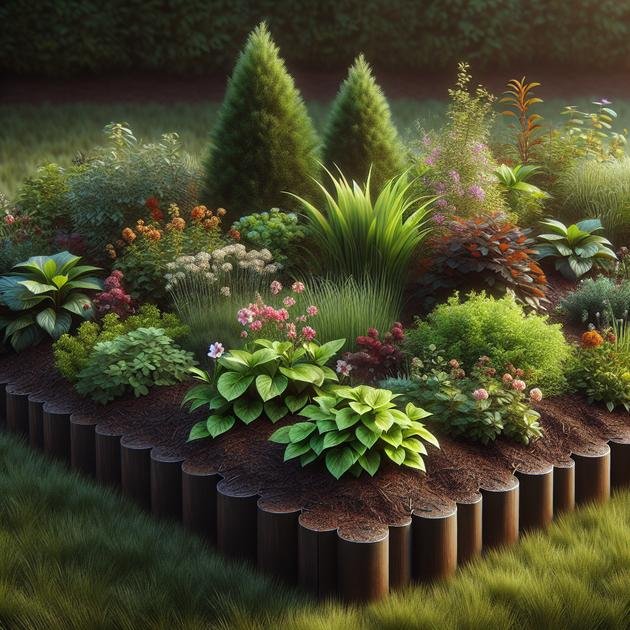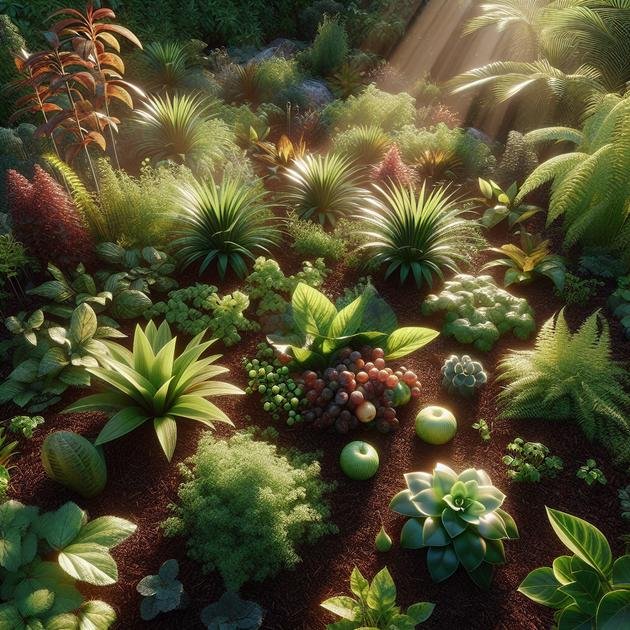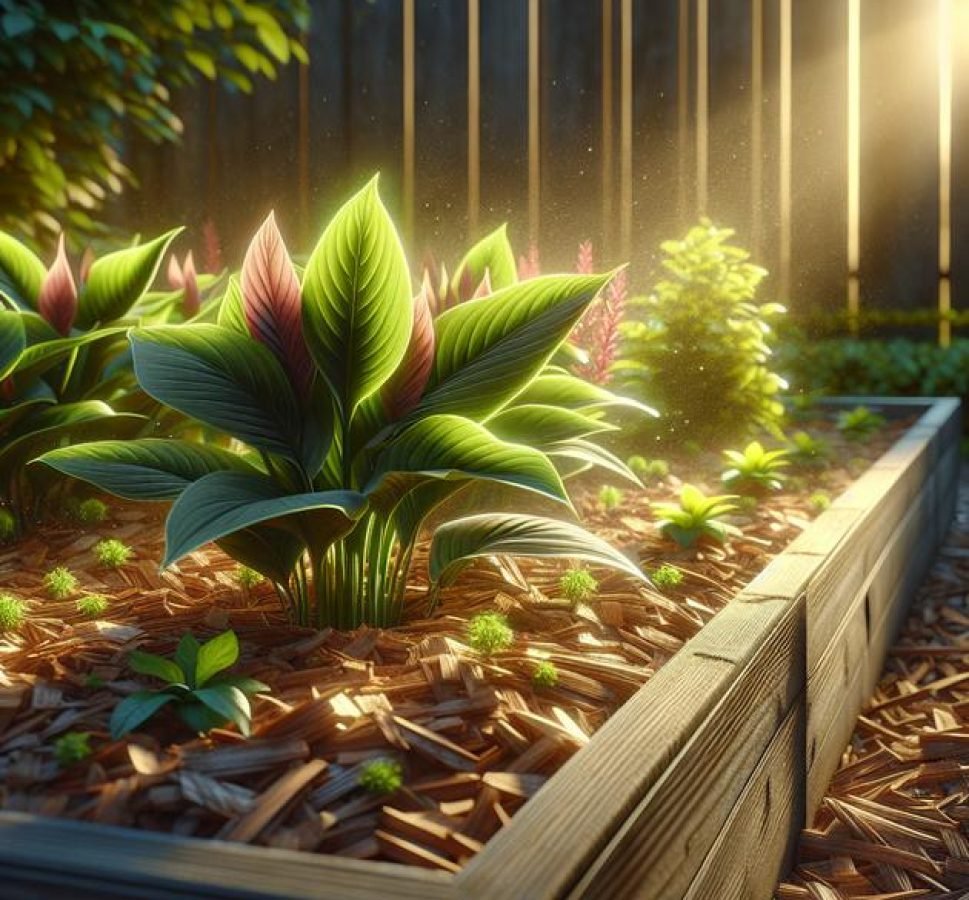No till gardening improves soil health by preserving soil structure, enhancing organic matter, supporting beneficial organisms, and reducing erosion, leading to sustainable and productive gardens without disturbing the soil.
No till gardening has gained traction as a smart way to care for soil without disturbing its natural balance. Ever wondered if there’s a simpler, less labor-intensive way to keep your garden thriving? Let’s explore how ditching the tiller can work wonders for your soil’s health.
What is no till gardening and why it matters
No-till gardening is a sustainable farming method that avoids disturbing the soil through tilling. Instead of turning the earth, gardeners rely on natural processes to improve soil health. This technique keeps the soil structure intact, preserves beneficial organisms, and reduces erosion. By not tilling, the soil maintains its natural moisture levels and prevents harmful compaction.
This method also promotes long-term fertility by encouraging the buildup of organic matter on the surface. Microorganisms and earthworms thrive in undisturbed soil, creating a lively ecosystem that supports plant growth. Additionally, no-till gardening helps retain carbon in the soil, playing a role in combating climate change.
Gardeners choose no-till approaches to save time, reduce labor, and create a more resilient garden. It’s especially beneficial for growing healthy vegetables and flowers over time. Understanding why no-till gardening matters gives you a great foundation to build a productive and sustainable garden.
Benefits of no till gardening for soil health
No till gardening offers numerous benefits for soil health that traditional tilling methods often disrupt. By avoiding soil disturbance, this method preserves the soil’s natural structure, allowing air, water, and nutrients to circulate freely. Healthy soil structure improves water retention and reduces erosion, which means plants get the moisture they need without runoff wasting valuable resources.
Soil biodiversity flourishes in no till gardens because the habitat for earthworms, beneficial insects, and microorganisms stays intact. These organisms break down organic matter and recycle nutrients, creating a nutrient-rich environment for plants. As a result, plants can grow stronger and healthier with less fertilizer input.
No till gardening also promotes higher organic matter content over time. Mulches and plant residues left on the surface slowly decompose, enriching the soil and enhancing its ability to store carbon. This process not only supports plant growth but also helps mitigate climate change by sequestering carbon underground.
Overall, practicing no till gardening leads to improved soil fertility, better moisture management, and a thriving ecosystem underground, which combines to create a more sustainable and productive garden.
How to start a no till garden step-by-step

Starting a no till garden begins with understanding your current soil and planning your garden layout carefully. First, choose a healthy spot that receives enough sunlight for your plants. Instead of turning the soil, prepare your garden bed by removing weeds and adding a thick layer of organic mulch such as straw, leaves, or grass clippings.
Next, focus on building soil fertility naturally. Use compost or aged manure on top of the mulch to provide nutrients. Cover crops like clover or rye can be planted to protect and enrich the soil by fixing nitrogen and adding organic matter.
When it’s time to plant, simply make small openings in the mulch and soil to place seeds or seedlings. This minimal disturbance helps maintain soil health and saves time. Water the garden gently to avoid washing away the mulch.
Regularly add organic mulch to keep the soil covered and minimize weed growth. Monitor your plants and soil health, and adjust your mulch and cover crop choices as needed. Patience is key, as the benefits of no till gardening improve soil structure and fertility gradually over several seasons.
Choosing the right mulch and cover crops
Choosing the right mulch and cover crops is crucial for a successful no till garden. Mulch acts as a protective layer on the soil surface, helping to retain moisture, suppress weeds, and gradually add nutrients as it decomposes. Organic mulches like straw, wood chips, leaves, and grass clippings are excellent choices because they improve soil health over time.
Cover crops are plants grown primarily to benefit the soil. They protect bare soil from erosion and help fix nutrients back into the ground. Popular options include clover, rye, and vetch. These crops can be mowed or cut back and left on the surface as green mulch, enriching the soil with organic matter.
When selecting mulch and cover crops, consider your climate and the specific needs of your garden plants. Some cover crops are better suited for cooler seasons, while others thrive in warm weather. Also, think about the soil’s nutrient needs; for example, legumes are great for adding nitrogen.
Combining mulch and cover crops effectively can lead to healthier soil with better structure, moisture retention, and nutrient cycling. Regularly replenishing mulch and rotating cover crops helps maintain long-term soil fertility and keeps your no till garden thriving.
Common mistakes to avoid in no till gardening
Many gardeners trying no till methods make some common mistakes that can hinder their success. One major error is failing to use enough mulch. A thick layer of mulch is essential to protect the soil, suppress weeds, and retain moisture. Without it, soil can dry out quickly and weeds often take over.
Another mistake is planting directly into poorly prepared soil. While no till gardening avoids turning the soil, it’s important to remove persistent weeds and check soil health before planting. Simply placing seeds on top of compacted or unhealthy soil can limit plant growth.
Improper choice of cover crops can also be a problem. Using the wrong species for your climate or soil type reduces benefits like nitrogen fixation and erosion control. Make sure to select cover crops that fit your region and gardening goals.
Additionally, some gardeners neglect the importance of adding organic matter regularly. Even with no till, the soil needs a steady input of compost or aged manure to replenish nutrients. Skipping this step can lead to nutrient deficiencies over time.
Finally, impatience can lead to abandoning no till practices too soon. Building healthy soil without disturbing it takes time and care, so consistent practice is crucial for long-term success.
Integrating compost and organic matter without tilling

Integrating compost and organic matter into a no till garden is key to maintaining soil fertility without disturbing its structure. Instead of mixing compost into the soil, apply it as a top dressing over existing mulch or soil. This allows nutrients to slowly seep into the soil while preserving soil layers.
Adding organic matter on the surface encourages beneficial organisms like earthworms and microbes to mix it naturally into the soil over time. These creatures help break down the compost and improve soil health.
Regularly topping off your garden with compost or aged manure helps replace nutrients lost during the growing season. It also improves moisture retention and soil texture without ever needing to till.
Another effective way is to use liquid compost teas or natural fertilizers that can be applied directly to the soil or plant leaves. These provide quick nutrient boosts and support microbial life.
By integrating organic matter gently and consistently, you foster a rich, living soil ecosystem that supports healthy plant growth in your no till garden.
Pest and weed management in no till systems
Pest and weed management in no till systems requires a different approach than traditional gardening. Since the soil is not disturbed, weed seeds are less likely to be brought to the surface, which naturally reduces weed growth. However, some weeds still emerge and need attention.
Mulching is a powerful tool in controlling weeds. A thick layer of organic mulch blocks sunlight, preventing weed seeds from germinating. It also creates a habitat for beneficial insects that prey on pests, reducing the need for chemical interventions.
Using cover crops can also suppress weeds by outcompeting them for light and nutrients. Leguminous cover crops add nitrogen to the soil while shading out weeds, improving overall garden health.
For pest control, encouraging natural predators such as ladybugs, spiders, and birds helps keep harmful insects in check. Avoiding harsh chemicals preserves these beneficial populations and supports a balanced ecosystem.
Manual removal or targeted, organic treatments like neem oil or insecticidal soap can be used if pest pressure becomes high. Monitoring plants regularly allows for early intervention before pests become a big problem.
Overall, integrated pest and weed management in no till gardens emphasizes prevention, habitat support for beneficial species, and careful intervention when necessary to maintain a healthy and productive system.
Long-term effects of no till gardening on your soil
The long-term effects of no till gardening on your soil are profound and beneficial. Over time, the soil structure improves dramatically as it remains undisturbed, allowing natural layers to form and beneficial organisms to thrive. This enhanced structure promotes better water infiltration and root growth.
Organic matter accumulates steadily when mulch and plant residues decompose on the surface. This buildup enriches the soil, increasing its ability to hold moisture and nutrients. Consequently, soil fertility improves without the need for heavy synthetic fertilizers.
Another key benefit is carbon sequestration. No till gardening helps trap carbon in the soil, which can mitigate climate change by reducing greenhouse gases. The thriving microbial community plays a vital role in this process, breaking down organic materials and cycling nutrients.
With consistent no till practices, the soil becomes more resilient to erosion, drought, and temperature fluctuations. This creates a healthier and more sustainable environment for plants and reduces garden maintenance over time.
Ultimately, long-term no till gardening fosters a self-supporting soil ecosystem that nurtures strong plant growth year after year.
Embracing no-till gardening for healthy soil
No-till gardening offers a natural, sustainable way to improve soil health and boost plant growth. By protecting soil structure, encouraging beneficial organisms, and building organic matter, you create a thriving garden ecosystem that needs less work over time.
While it may take patience, the long-term benefits include richer soil, better moisture retention, and reduced erosion. Using mulch, cover crops, and compost wisely helps you get the most out of this method.
Trying no-till gardening can transform your green space into a healthy, productive haven. Start small, stay consistent, and enjoy the rewards of nurturing your soil naturally.





